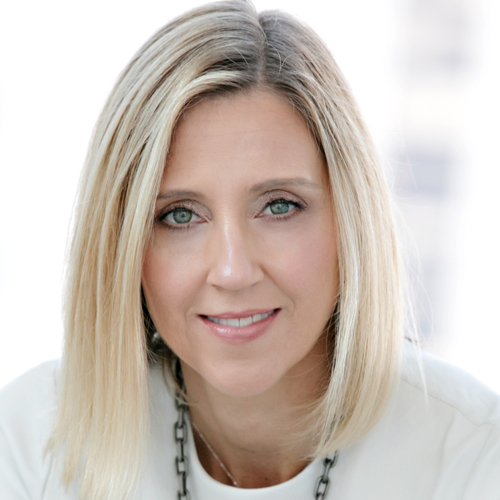LVMH on Supporting Adaptive Fashion & People with Disabilities
January 19, 2021
Sacha Brown

Gena Smith, Senior Vice President of Human Resources and Head of Global Executive & Creative Recruitment for LVMH Moët Hennessy Louis Vuitton, is a highly experienced human resources executive, who ensures that LVMH is best in class at selecting, developing, and retaining senior executive and creative talent. In 2012, Smith led the first Diversity and Inclusion initiative for LVMH North America. As an advocate and supporter of Adaptive Fashion and working to support People with Disabilities, Smith spoke with the CFDA in advance of joining us for this week’s CFDA webinar on Adaptive Fashion, Learning From The Leaders, which you can register for here.
How has LVMH partnered with Runway of Dreams/Gamut Management?
We have collaborated with Runway of Dreams and Gamut Management on multiple educational sessions and events that have helped evolve LVMH’s employees outlook on People with Disabilities with more than 500+ participants in the U.S. participating in these initiatives last year.
One example among many was the Runway of Dreams/Gamut Management fashion show. We brought make-up artists from our brands to do the make-up for PWD models, to make them feel even more beautiful than ever. All of our artists spent time with the models getting to know them. After the event, they told us it was one of the most moving and profound experiences they have had in their career.
On International Day of PWD this year, we organized a webinar for LVMH employees which kicked off with a panel including Mindy Scheier, Grace Jun, an educator and CEO at Open Style Lab, and Keshia Brown, Writer, Author of The Pretty One (2020), and Creator of #DisabledAndCute. The partnership with Runway of Dreams has given our employees in North America an opportunity to learn and gain perspective by hearing from Mindy and many PWD within these events.
In your role at LVMH, how are you working towards ensuring a more inclusive and diverse corporate culture?
At LVMH, we are committed to a culture of respect, equity, and inclusion anchored in the diversity of our people, businesses and brands. Ensuring a more diverse and inclusive culture is good for our employees and customers and ensures the future of our brands. To achieve continued success, LVMH takes a long view approach. In an organization whose storied brands span decades – if not centuries – the approach to D&I must be forward-looking to drive progress in the months and years to come. We do this through:
- Education and training of our employees around issues of diversity such as unconscious bias and cultural identity and how it applies to the business.
- Improving our inclusive hiring practices at all levels of the organization to bring in and promote diversity at all levels of the organization. This includes diversity training for all recruiters to apply throughout the hiring process.
- Working toward an inclusive customer experience, represented in products, marketing, and the in-store experience. For 2021, we have launched anti-racism training for our store employees and store managers which focuses on how to combat discrimination in our retail locations.
Specifically, for PWD:
- There is a fear of the unknown and people can be quick to make assumptions. We all have these unconscious biases, and it’s perfectly normal, but we need to be aware that we have them, so they don’t influence our behavior.
- As an organization and as a culture, we need to be more open-minded and curious. We need to have more exchanges with PWD to better understand them and their needs. This is one of the goals of hosting events with Runway of Dreams for our employees – to allow opportunities for them to hear directly from PWD in order to better understand their needs.
- We need to be willing to make adaptations, to work on aligning people with the right jobs, provide them with training and support.
This commitment is worth it; what you get back in return is truly extraordinary. And we have been focused on making progress in this area over the last few decades:
- In 2007, LVMH structured a strategy to support employees with disabilities through concrete actions at all stages of their employment experience, including recruitment practices, maintaining employment and work with suitable accommodation for each individual to excel.
- In 2020, LVMH became a signatory of the charter of the International Labor Organization (ILO) Global Business and Disability Network. This public commitment aims at raising awareness in the corporate world about all types of types of disabilities, to enhance accessibility of services and communications, and to promote employment of persons with disabilities.
- In 2018, SEPHORA successfully launched the SEPHORA Accessibility program in the Distribution Centers. Through this program, they have a workforce that is composed of 30 percent PWD. The results, backed by years of data, are clear: a higher productivity rate, a lower absentee rate and extremely high levels of reliability and performance. It shouldn’t come as a surprise. PWD are hardworking, driven, and passionate about their work.
What are some steps a brand can take to create a more inclusive design practice?
The first step is to create understanding regarding the business opportunity: the adaptive clothing market is on rise. In 2019, it was valued around $300 billion globally. This is a growing global market that is expected to reach a valuation of $400 billion in the next five years. There continues to be unmet demand, and disability and style are not mutually exclusive.
Next, better understand the customer. Never assume that PWD are not interested in fashion or beauty. They, too, want to participate in the cultural zeitgeist. They, too, feel empowered by fashion and beauty products. I think that for far too long the fashion industry overlooked or ignored individuals with disabilities. Today, we see the success of the brands that seized the opportunity and do care – the brands that design adaptive apparel – and the incredible loyalty of their customers.
What we have done at LVMH:
- During our webinar on IDPWD, we had a session on Inclusive Design with Grace Jun, a professor at Parsons. She presented the inclusive design principles: Recognize Exclusion, Learn from Diversity, Solve for One, Extend to Many. She proposed Inclusive Design Workshops with the disability community, and we are currently promoting this among our brands.
- Inclusive design also includes the diversity of the design teams. a list of diverse design creatives was curated by Virgil Abloh and shared among all the Maisons as a way to re-think about the creative and design side of the business.
We have brands that are exploring ways to be more inclusive in all aspects of the business from design to technology. Kenzo US collaborated with the company Facil’iti to redesign their website to accommodate people with disabilities.
The demand for Adaptive Fashion is so high but so few brands have entered the space. Is LVMH working with any of their Maisons on entering the Adaptive Fashion space?
In partnership with RoD we have been running specific sessions this year for Louis Vuitton and Marc Jacobs with their design and marketing teams. As a Group, we are providing the support and guidance for them to find their own path in this space. By offering education to all our employees, we want to shine a light on this opportunity and connect with an audience we haven’t really spoken to before. Within our diversity and inclusion mission, we seek to create opportunities for all our customers and employees around the world.
It’s important to remember that PWD are the largest minority in the world, with a community of over 1 billion people. And PWD are no different than other people: they want to look and feel good. to experience beautiful products. They dress up and wear cosmetics and fragrances. Many of them already feel different because of their disability. They don’t want this feeling exacerbated by patronizing brands. They want to be treated equally, to be treated like everyone else. And fashion has the power to remove stigma by transforming the way people look and feel, by giving them confidence. It’s also a great business opportunity.
As a Fashion Industry Council Member for RoD, how are you using your influence in the industry to advance the mission of the foundation?
Mindy Scheier’s story has changed my perspective. I realized that millions of people with disabilities are struggling to find fashionable clothing that fit their needs. I am proud to have been able to introduce her and RoD to our Group and its Maisons, and to have contributed by opening the conversation around inclusivity of PWD within our fashion brands, and beyond.
Register for the remaining webinars below:
Learning From The Leaders | January 21 @ 12pm EDT
Learning From The Researches | January 28 @ 12PM EDT
Learning From The Innovators | February 4 @ 12PM EDT

